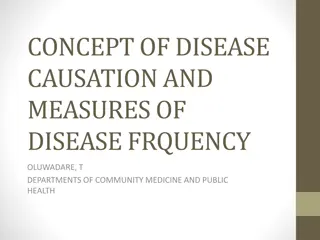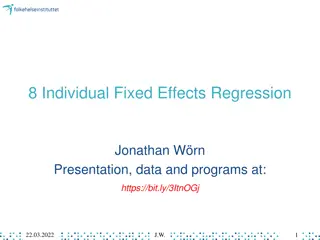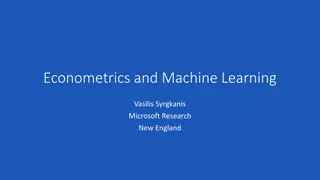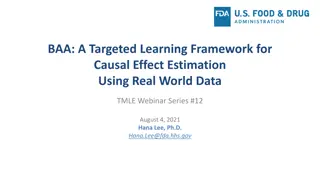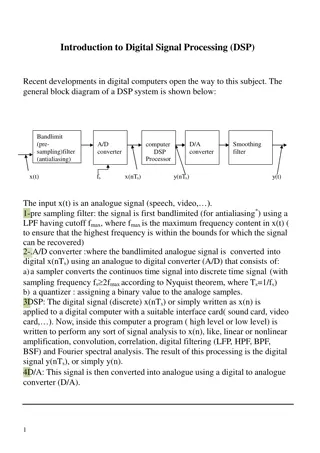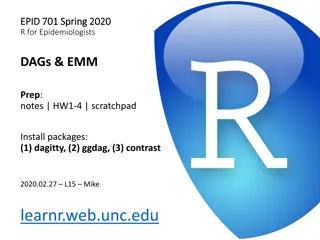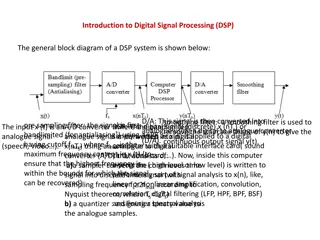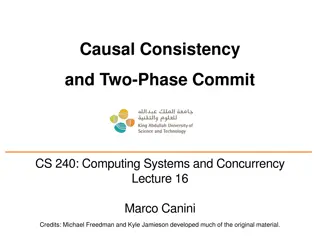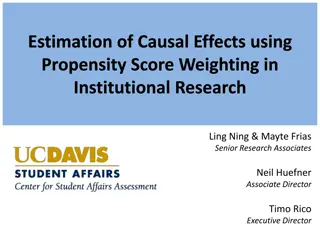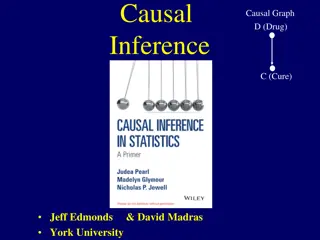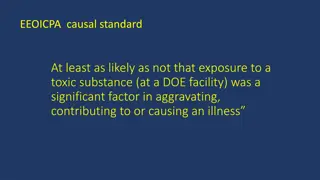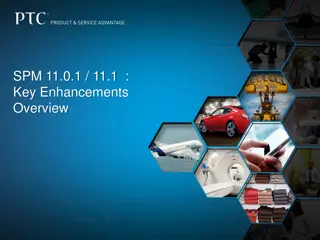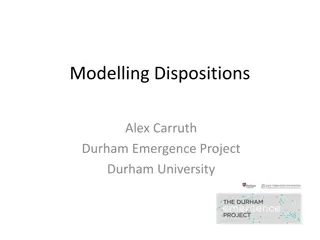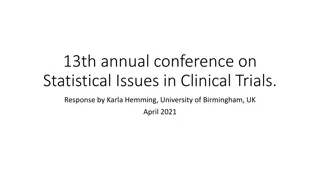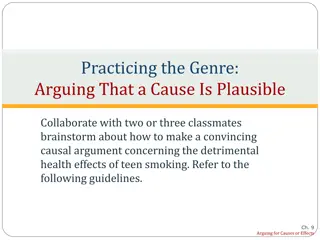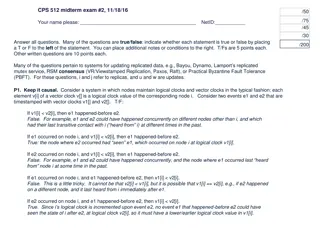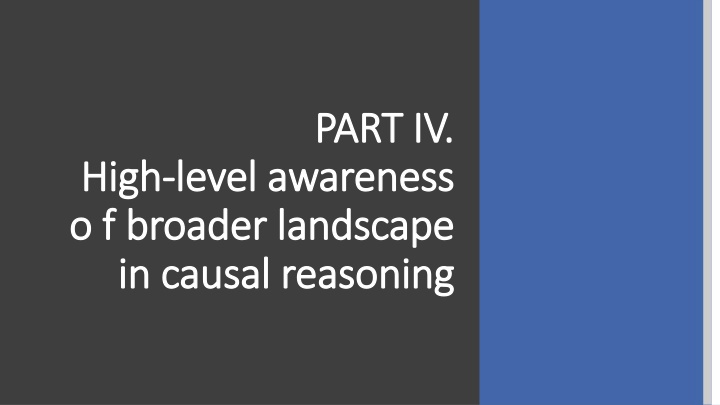
Understanding Causal Inference in Machine Learning
Explore the realm of causal reasoning and inference in machine learning, encompassing the discovery of causal relationships from data, heterogeneous treatment effects, automated causal inference, and more. Delve into the complexities of causal discovery and the effects of causes, shedding light on how machine learning intertwines with causal inference to predict counterfactual outcomes.
Uploaded on | 0 Views
Download Presentation

Please find below an Image/Link to download the presentation.
The content on the website is provided AS IS for your information and personal use only. It may not be sold, licensed, or shared on other websites without obtaining consent from the author. If you encounter any issues during the download, it is possible that the publisher has removed the file from their server.
You are allowed to download the files provided on this website for personal or commercial use, subject to the condition that they are used lawfully. All files are the property of their respective owners.
The content on the website is provided AS IS for your information and personal use only. It may not be sold, licensed, or shared on other websites without obtaining consent from the author.
E N D
Presentation Transcript
PART IV. PART IV. High High- -level awareness level awareness o f broader landscape o f broader landscape in causal reasoning in causal reasoning
Outline Outline Discovery of causal relationships from data Heterogeneous treatment effects Machine learning, representations and causal inference Reinforcement learning and causal inference Automated causal inference
Effects of causes and causes of effects We discussed causal inference: effects of causes But a complementary question is causal discovery [Local] Causes of effects [Global] Mapping out causal mechanisms In general, a harder problem. See Causation [Spirtes (2000)] and Elements of Causal Inference (Scholkopf et al. 2017).
Average causal effect does not capture individual-level variations Stratification is one of the simplest methods for heterogenous treatment by strata Typical strata are demographics. Need more data to statistically detect differences For high-dimensions, can use machine learning methods like random forests [Athey and Wager, 2015]
Machine learning and causal inference
Causal inference as a (counterfactual) prediction problem Causal inference robust prediction Causal inference Predicted value under the counterfactual distribution P (X,y). (Supervised) ML Predicted value under the training distribution P(X,y). ? ?,? :? = ? ? ?,? : ? = ? ? + ?
Causal inference: A special kind of domain adaptation X X X Y T Y T Y T P(Y,T,X) Observed data P*(Y,T,X) Randomized experiment P**(Y,T,X) Another domain
Predicting the counterfactual Causal Inference Predicting Individual treatment effects can be considered as domain adaptation --Use regularization and transformation of input features [Johansson 2016] Generalizing prediction to new domains -- Selection bias or covariate shift [Barenboim and Pearl 2013] -- If predictive model generalizes to new domains, can be considered causal [Peters et al. 2015]
Causal inference and machine learning Machine learning Machine learning Use causal inference methods for robust, generalizable prediction. Causal inference Use ML algorithms to better model the non- linear effect of confounders, or find low-dimensional representations. In general, be wary of methods that have not been empirically tested, especially ones that you do not understand.
Reinforcement learning and causal inference
Generalizing a randomized experiment Markov Decision Processes Multi-Armed Bandits A/B test POMDPs
Efficient randomized experiment: Multi-armed bandits Two goals: Old Algorithm 1. Show the best known algorithm to most users. ????(? 1) clicks to recommendations 2. Keep randomizing to update knowledge about competing algorithms. Current-best Algorithm Random Algorithm ????(?) clicks to recommendations ?????(?) clicks to recommendations Explore and Exploit strategy Most users Other users 14
Practical Example: Contextual bandits on Yahoo! News Actions: Different news articles to display A/B tests using all articles inefficient. Randomize the articles shown using -greedy policy. Better: Use context of visit (user, browser, time, etc.) to have different current-best algorithms for different contexts. Li-Chu-Langford-Schapire (2010) 16
Many of these techniques can be combined 17
Remember, we are always looking for the ideal experiment with multiple worlds Causal estimate ??=1 ??=0 ??=0 ??=1 Cloned user 18
Example: Randomization + Instrumental Variable Treatment example: You cannot randomize who exercises, but maybe can provide incentives to join the gym. Algorithm example: You cannot remove recommendations at random, but could advertise a focal product to a random subset of people on the homepage. 19
Causal inference is tricky Correlations are seldom enough. And sometimes horribly misleading. Always be skeptical of causal claims from observational any data. More data does not automatically lead to better causal estimates. http://tylervigen.com/spurious-correlations 21
Causal inference: Best practices Always follow the four steps: Model, Identify, Estimate, Refute. --Refute is the most important step. Aim for simplicity. --If your analysis is too complicated, it is most likely wrong. Try at least two methods with different assumptions. --Higher confidence in estimate if both methods agree. 22
Thank you! Emre Kiciman, Amit Sharma (Microsoft) @emrek, @amt_shrma Tutorial and other resources will be posted at: http://causalinference.gitlab.io DoWhy library can be accessed at http://causalinference.gitlab.io/dowhy




